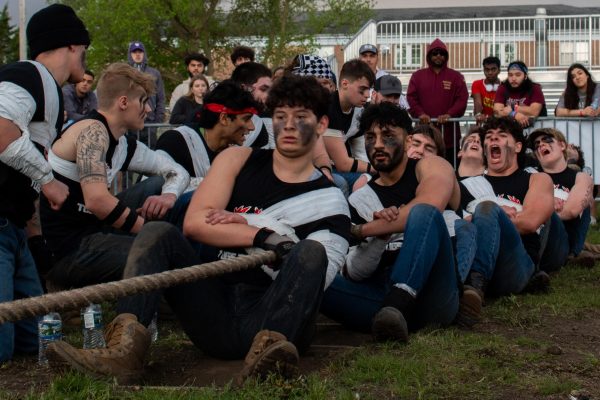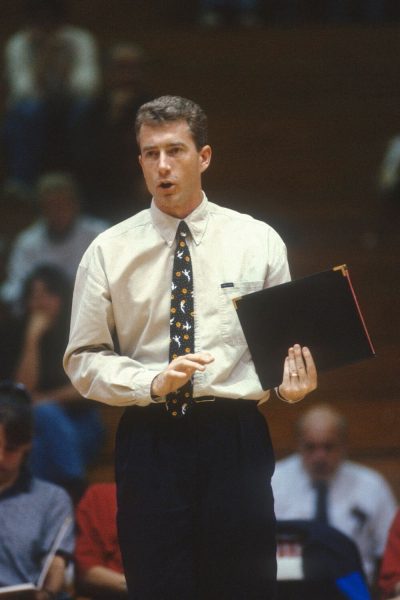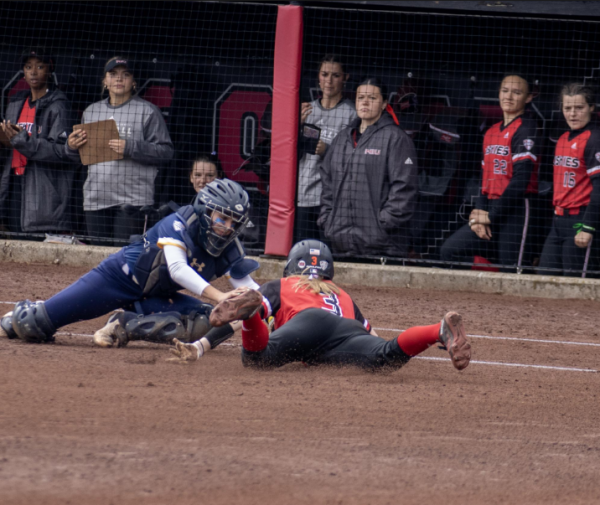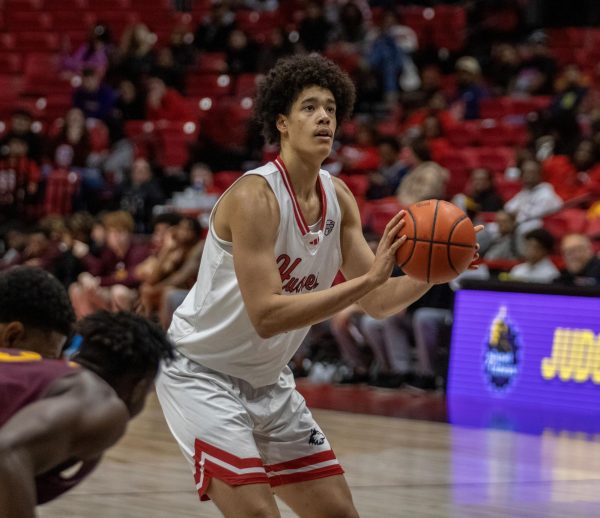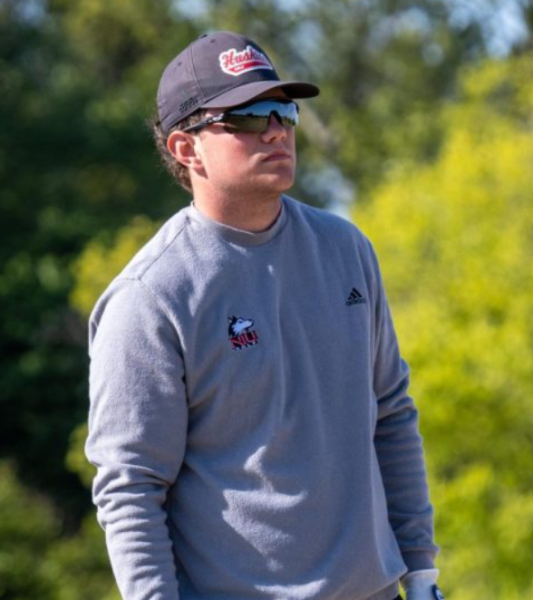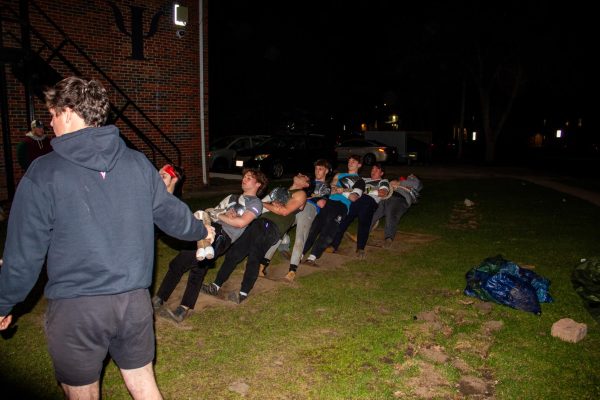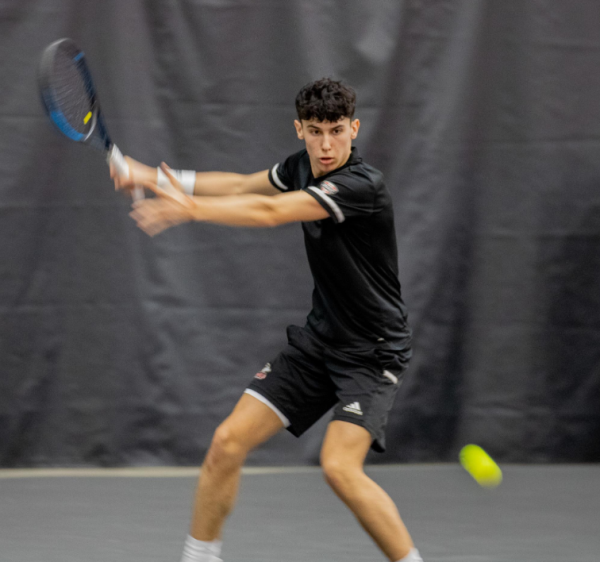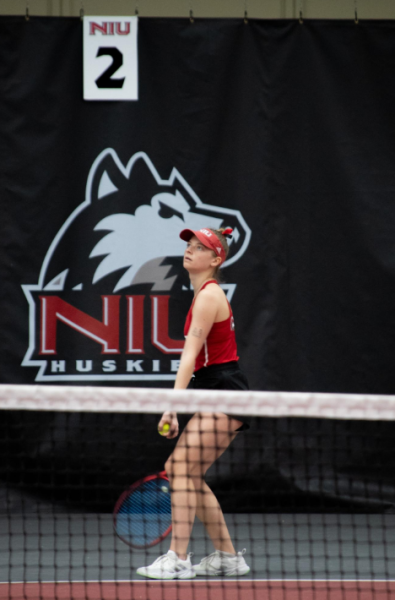Torn away
February 28, 2007
Cody Yelder could only lie on the court. His left knee locked up. A sharp pain stung under his knee cap. His leg just wouldn’t – couldn’t – work. This sensation, this pain, was completely new. Sure, he’s had his fair share of rolled ankles and jammed thumbs, but nothing this serious. Not torn meniscus serious. Not surgery serious.
NIU trainer Jeff Sisson has a simple analogy in regard to the injury.
“The miniscal cartilage acts as a shock absorber,” Sisson said. “When they get torn, it’s like sticking a wedge between two moving wheels.”
But that wedge may have already been in Yelder’s knee well before the game against Lamar on Dec. 20.
Still clutching his knee, the freshman thought back to a game against Duquesne on Nov. 25.
Yelder was coming around a screen when his knee buckled. He got up and finished the game, thinking nothing of it.
“I thought it was a little thing that might get better,” Yelder said.
As athletes are taught, there’s a difference between being hurt and being injured. You can play through hurt, but you can’t play through an injury.
Questions abound: Should he have taken time off to heal? Would the injury have happened anyway?
Unfortunately for Yelder, it was too late to ask those questions. Now, the only questions dancing through his mind were the same ones being asked by Sisson: Have surgery now or later?
“Cody handled it very well,” Sisson said. “He understood what was going on the whole time.”
Sisson works with each athlete to decide what is the best way to handle every situation, he said.
But as much as Sisson’s expertise can help, the final choice is the athlete’s.
For that, Yelder only needed to talk to one person: his mother.
“She told me to get the surgery done right away,” Yelder said. And with that, he went under the knife on Dec. 28.
“His body handled the surgery well,” Sisson said. “A lot of athletes take a step backward. Cody did great.”
After surgery, the first part of rehab is controlling the swelling of the knee and slowly increasing the range of motion, Sisson said.
From there, rehabilitation increases to include more motion such as stair stepping, to shooting from a stationary position, then to moving around while shooting. Then come slow-paced agility drills, and finally the full-speed drills.
“One thing we do is try to incorporate the player with the team as much as possible, so the player doesn’t feel isolated,” Sisson said.
This includes rehabbing while the team practiced, being around the team as much as possible and watching the games from the sidelines.
Most players – especially a player who broke Dwyane Wade’s scoring record at Richards High School – would find sitting on the bench hard. However, as dark as the clouds may have been, the freshman gazed upon a silver lining.
“I learned more while watching,” Yelder said. “It made me miss the game even more. I don’t remember the last time I missed a game. It was stressful not being able to play.”
Sitting on the bench, Yelder was able to readjust to the speed of college basketball, watch the plays and analyze what he would have done in any given situation.
It worked.
After being back two games, Yelder led all scorers with a career-high 20 points against Ohio on Feb. 10, converting key free throws to seal the victory.
“I didn’t want to think about the injury as much,” Yelder said. “Once I got into the flow of the game, it skipped my mind.”
Two days later, Yelder was named MAC West Player of the Week.
An award NIU hopes is the first of many to come for its young, talented – and healthy – star guard.


